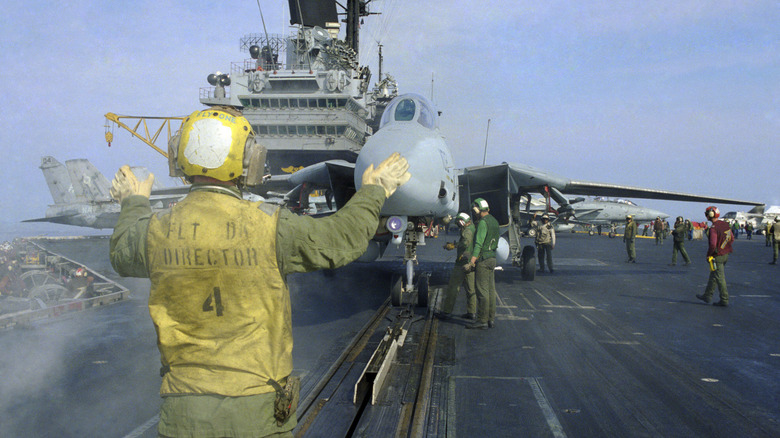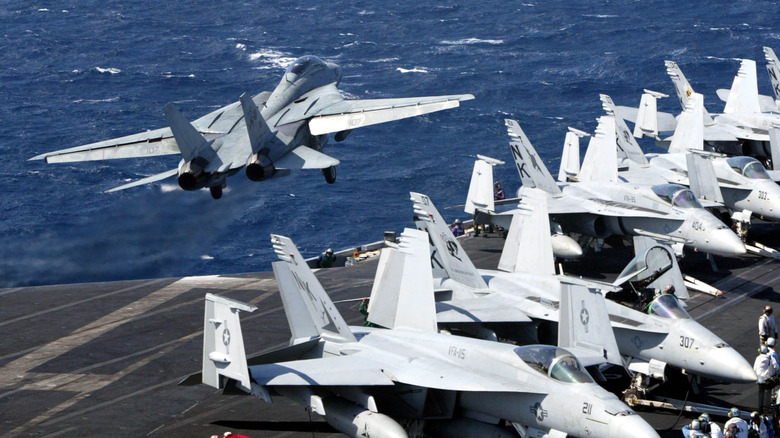How Many Planes Can An Aircraft Carrier Launch Per Minute?
To the untrained eye, a busy carrier flight deck looks like an uncoordinated shambles. In reality, it's a finely tuned piece of choreography that's designed to optimize how quickly carriers can launch (and retrieve) aircraft. But just how many planes a can carrier launch in a minute, depends on factors including the type of carrier, the crew, launch procedures, and the environmental factors at the time. For instance, a Nimitz-class carrier like the USS Harry S. Truman can launch two planes every 37 seconds in daylight, or just over three a minute; the rate drops to one per minute at night. Astonishingly, it can do this while retrieving planes at the same time.
While these are impressive numbers, the world's most advanced aircraft carrier — the USS Gerald R. Ford — is expected to surpass this. While getting precise launch numbers for the ship is difficult, it's designed to launch 25% more sorties than the Nimitz-class carriers. Extrapolating this figure suggests that the Ford-class carriers will be able to launch at least four planes per minute under peak conditions. For comparison, the U.K. HMS Queen Elizabeth carrier has a maximum launch rate of 24 aircraft every 15 minutes, or about 1.6 per minute.
The astonishing rate at which planes can launch from aircraft carriers is an operational necessity. The faster you can get your assets to where they're needed, the better. Even as far back as WWII, the development of more advanced catapults saw launch rates reach 1.5 per minute by the war's end.
EMALS: Launching the future of naval aviation
Without diminishing the work of the brave men and women who crew these behemoths, there is one piece of hardware that can help raise launch rates — the catapult. The genesis of the steam-powered catapult present on many modern carriers can be traced back to the 1950s and America's need for its carriers to launch heavy bombers. A task that strained the then hydraulic-powered catapults to their limits. However, it was the British who developed the first practical steam catapult, a technology that was then passed to the Americans. Until recently, the steam catapult remained the preferred way to launch aircraft. Although there are exceptions, the Russian carrier Admiral Kuznetsov, one of the worst aircraft carriers in military history, and the British "Queen Elizabeth-class" carriers, use "ski-ramps."
Steam catapults aren't without their problems, though. They are heavy, inefficient, and difficult to control. Ultimately, the latest generation of American carriers, including the aforementioned USS Gerald R. Ford, has switched from steam to electric to power their catapults. The latest Electromagnetic Aircraft Launch System (EMALS) is designed to address the limitations of steam catapults. They have more power, are easily controlled, and can be specifically configured for individual aircraft types, a point that also reduces stress on aircraft airframes. While the British carriers prove that decent launch rates are possible without catapults, the U.S. Navy's investment in EMALS shows just how critical catapults are when it comes to "ramping up" launch numbers.

